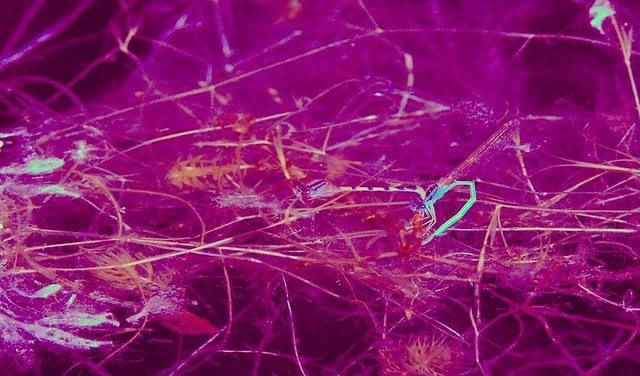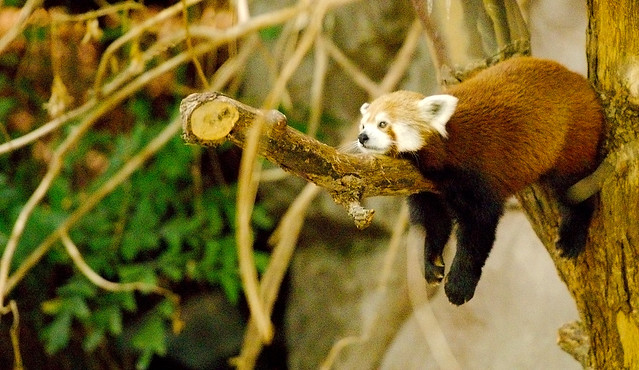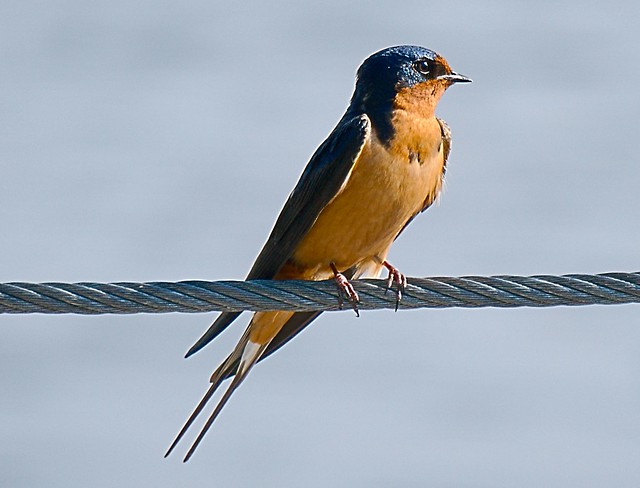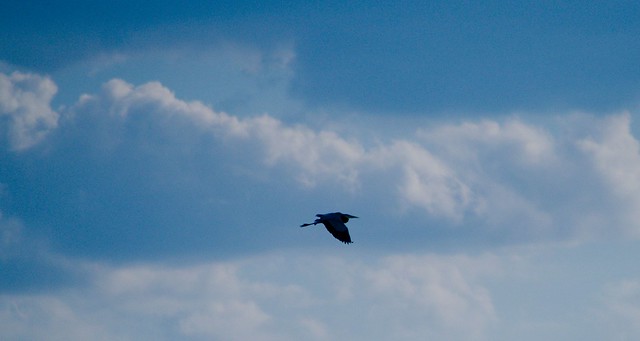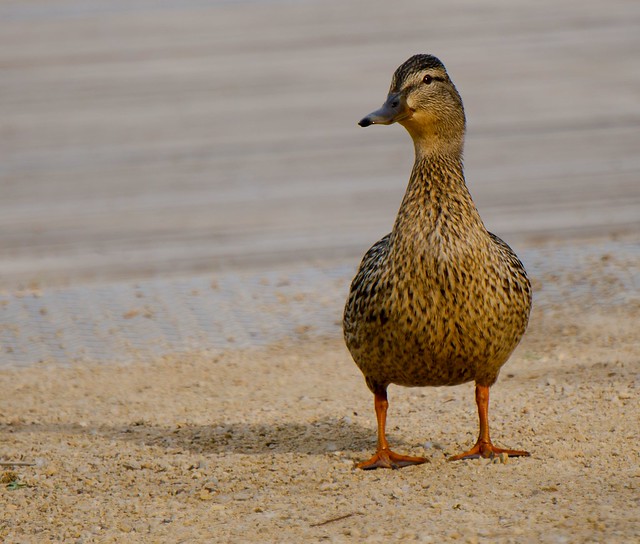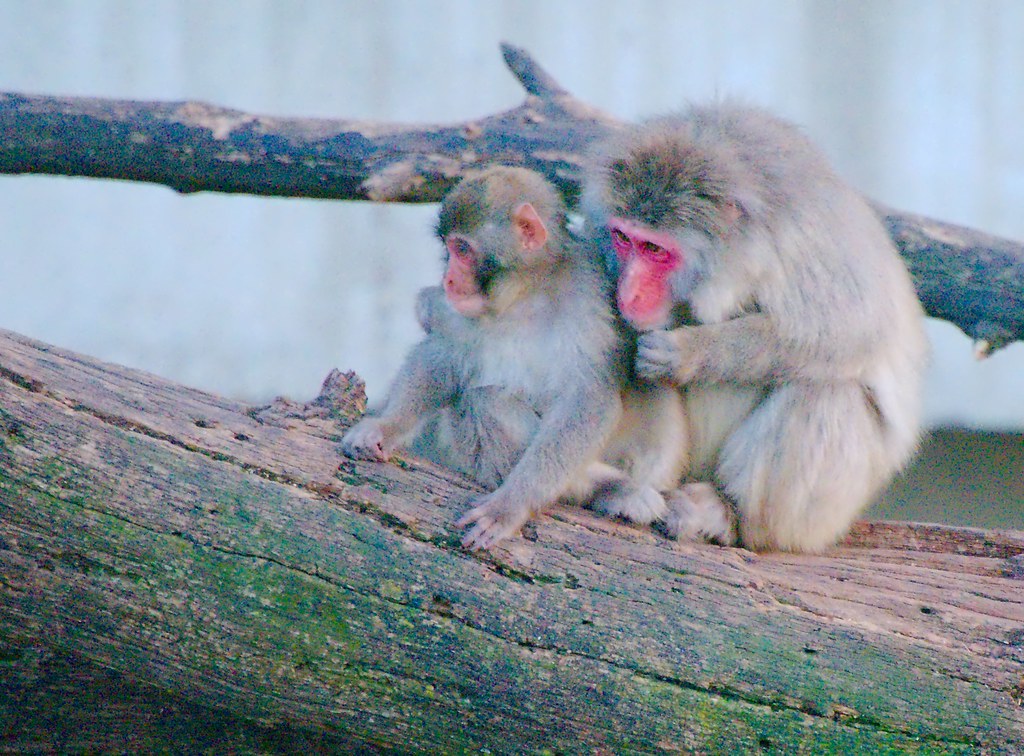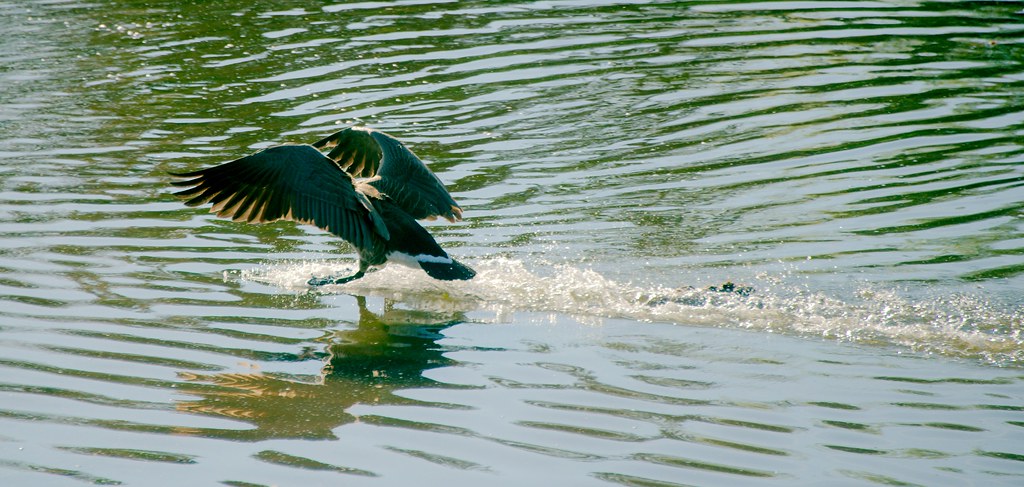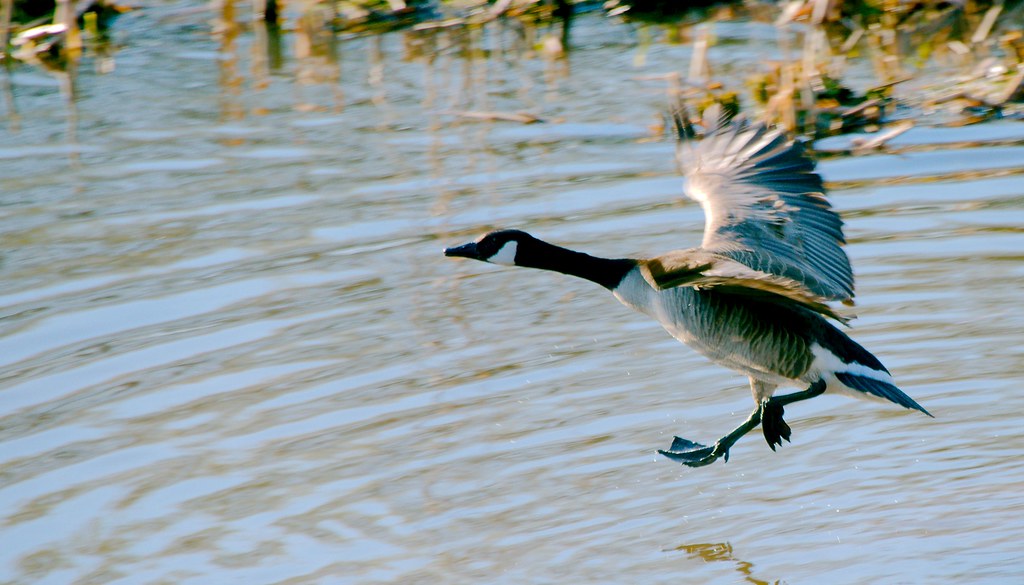In deep infrared, there is no point in trying to identify if the roller is lilac-breasted or blue-bellied.
Damselflies
Infrared path
Wood Lake
Turtle Testing
As has been mentioned earlier, I am going to Central America to photograph sea turtles. The challenges to this trip are many, but from a photographic perspective, there are two really big ones. First, the turtles only lay eggs at night and, second, traditional flash is not allowed. This means that, were I to use my normal camera, this is the best I could do:
Traditional Photography
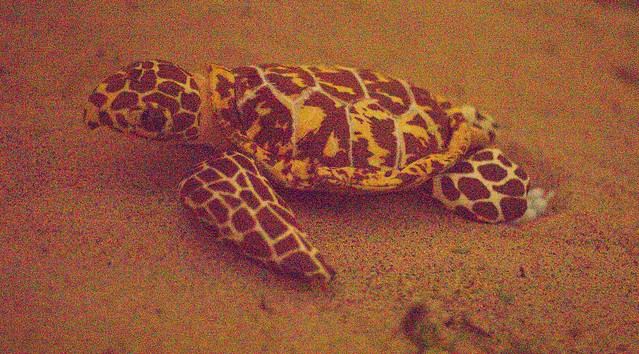 |
 |
This is a photo taken in pitch blackness (11pm, new moon, under the shade of trees) with a Nikon d810 and a 50mm f/1.4 lens. In lay terms, it means that if I have a tripod AND the turtle doesn’t move for the three seconds it takes to make this shot, this is the best I can get. Converting to black and white helps, but it’s still not great. Sometimes, though, you can use a red flashlight. Let’s see how that does…
 |
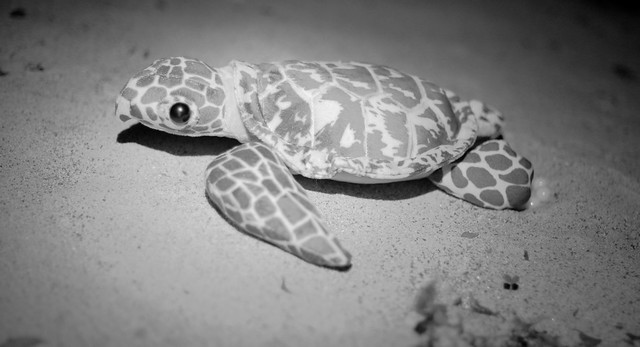 |
Better, and the black and white conversion is certainly something I can work with. As a bonus, it’s a lot faster and only takes a quarter of a second to get the shot. That might be fast enough for turtles that are just sitting around, but it won’t be good enough for egg laying. Also, we’d have to be really careful with that red flashlight to not bother them. This is where things get really interesting. It turns out that you can buy infrared flashlights on Amazon. They’re used for hunting and night scopes. This seems extremely unfair to me, effectively transforming humans into some kind of invisible kill-from-a-distance super predator, but I guess I’ll use the tech since it’s been invented.
 |
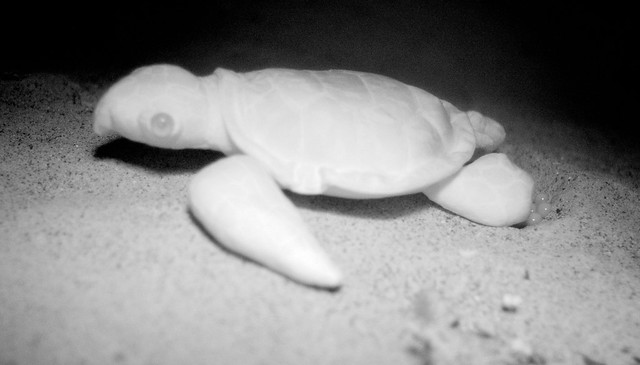 |
Now, while digital cameras do pick up infrared light, people put in a lot of work to keep it from happening because, as you see, it can shift the colours and a high-IR scene can give it a purplish tint. Black and white works out OK, but I still think we could do better. This is where I have two options.
Low Light Photography
The Sony a6300 is a little, relatively inexpensive, camera that is supposedly better in low light than my regular gear. As a bonus, there is an adapter that I can use for my regular lenses so I can use it as a backup in case something goes wrong with my regular camera. Let’s see how it handles:
 |
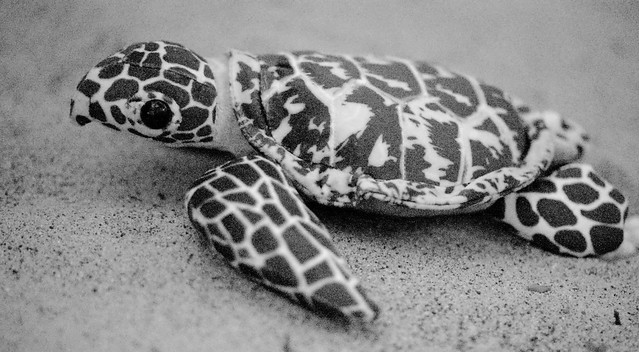 |
This is a regular visible light photo, much like I did with my primary camera. This lens, though, is a 1.0, not a 1.4, so it’s a bit faster. Interestingly though, this did not result in a faster shot, just a somewhat better image. The black and white, though, worked out pretty well. There’s clearly something to this camera. Let’s test it with a red flashlight.
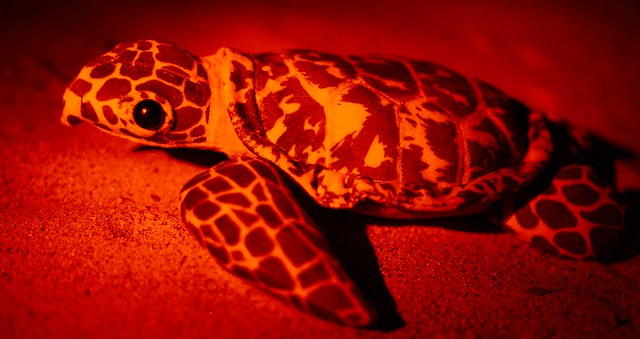 |
 |
Now that’s more like it! A decent shot with no real hot spots, in 1/125th of a second and one that converts very cleanly to black and white. This is definitely something I can work with at night. Am I lucky enough to have it work in infrared?
No photo for this one because, no. The Sony a6300 picked absolutely no infrared light at all. So if we get a skittish turtle and can’t use the red flashlights, I’m out of luck. So what can we do?
Infrared Photography
Now that I have a new backup camera, I sent my old backup camera (a Nikon d800) out to be converted into infrared. There are several ways to have this done. I selected what is called a “supercolour conversion”. This camera detects light starting around orange all the way down into the deep invisible part of the spectrum. This way, I should be use both the red light, which is brighter and easier to work with and, with skittish turtles, the infrared flashlight.
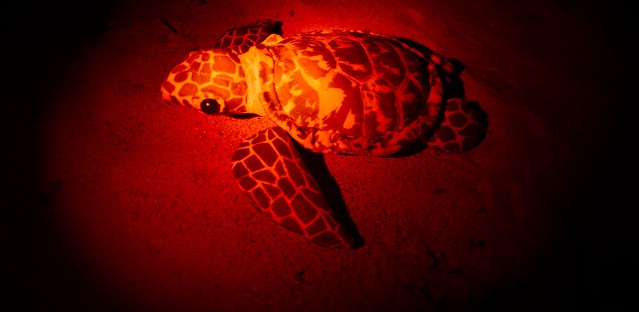 |
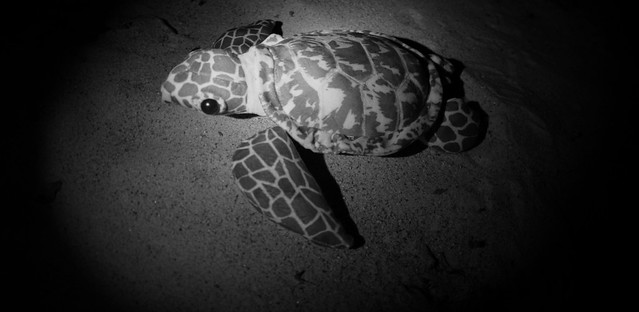 |
Here is the red light test. It’s fine, but the Sony option is clearly better. Additionally, the Sony gives me a lighter system that can more easily be manipulated out on the beach so, all things being equal, I’ll probably stick with the Sony for those sorts of shots.
But how does it do for IR, the entire point of the conversion?
 |
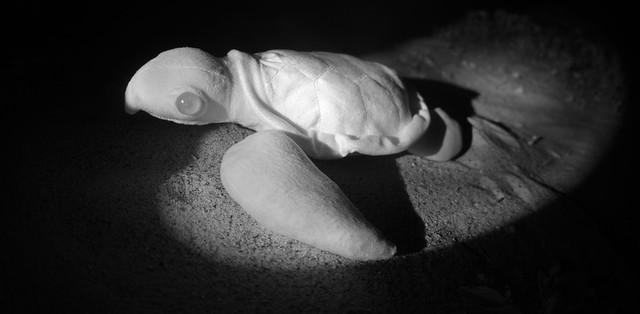 |
Oh yeah! Check that out. 1/90th of a second, with a good chance of going higher with a different lens. A beautiful image and one that excellently converts to black and white. Also, it is very likely that, though extremely cooperative, a real turtle will have more interesting patterning in infrared and, hopefully, less spooky eyes.
Conclusions
So there we have it. One camera to use during the day and two cameras to use at night depending on what is needed for the health of the animal. Next up, if the equipment arrives in time, I hope to see how I can do with infrared flash. In theory, this should give me a much faster working method where I could ditch the tripod, giving me a lot more artistic freedom. (Turns out that setting up a tripod in the dark and then working with invisible light can be rather difficult.)
If you want a plush sea turtle of your very own, you can get one by contributing to the Cura Earth fundraiser at https://igg.me/at/turtletracts/x.
Infrared trees
Heron
Infrared winged blackbird
The interesting thing to note here is the infracolour of the plants. The grasses in the front and the leaves in the back both reflect infrared light similarly.
The reason the back is so dark is not because of the infracolour of the leaves but because of how much infrared light is attenuated by the air.
Red Panda
Prairie Dog playing Twelfth Night
Duck
Turtle
Swallow
Waterscape
Heron
Democratic Duck
Frog
Frogs have been around for a long time. They’ve seen humans learn to play with sticks. They’ve seen humans push those sticks into the mud to make pictures. They’ve seen those pictures turn into simplified symbols. They’ve seen those symbols simplify even further so they could be combined to increase meaning. They’ve seen the increased communication abilities drive global trade. They’ve seen global trade get sped up with computers. They’ve seen these computers translating the simplified symbols into other simplified symbols so people in different parts of the world can understand each other. They’ve seen people work together to improve this process, fostering global understanding and the creation of a world-wide list of characters so computers can understand all language on earth. They’ve even seen what humans do with this amazingly advanced technology.
Was it worth all the effort?
¯\_(ツ)_/¯

